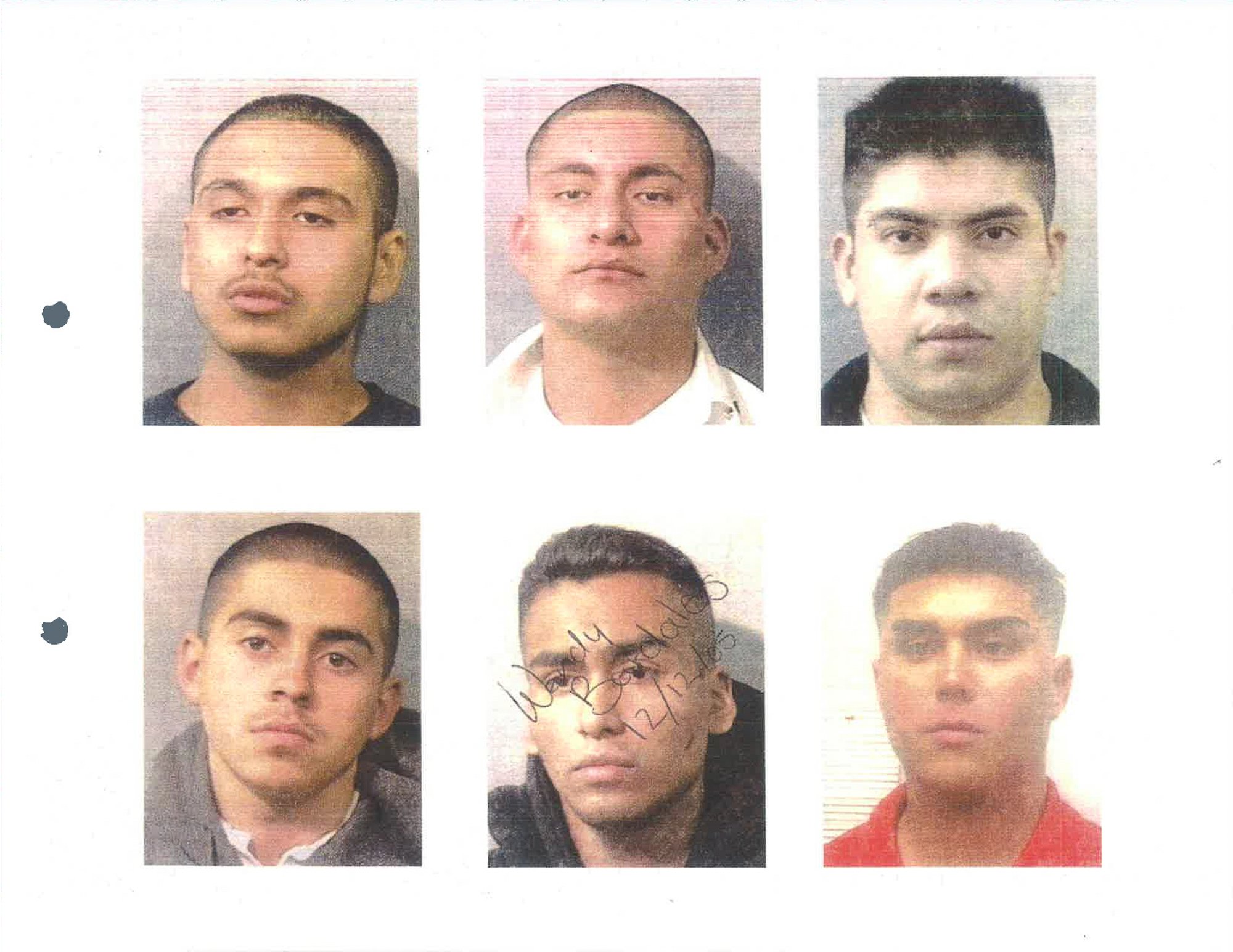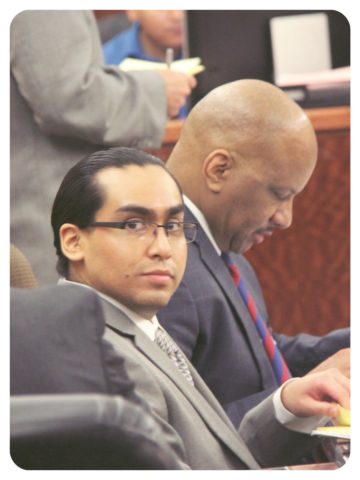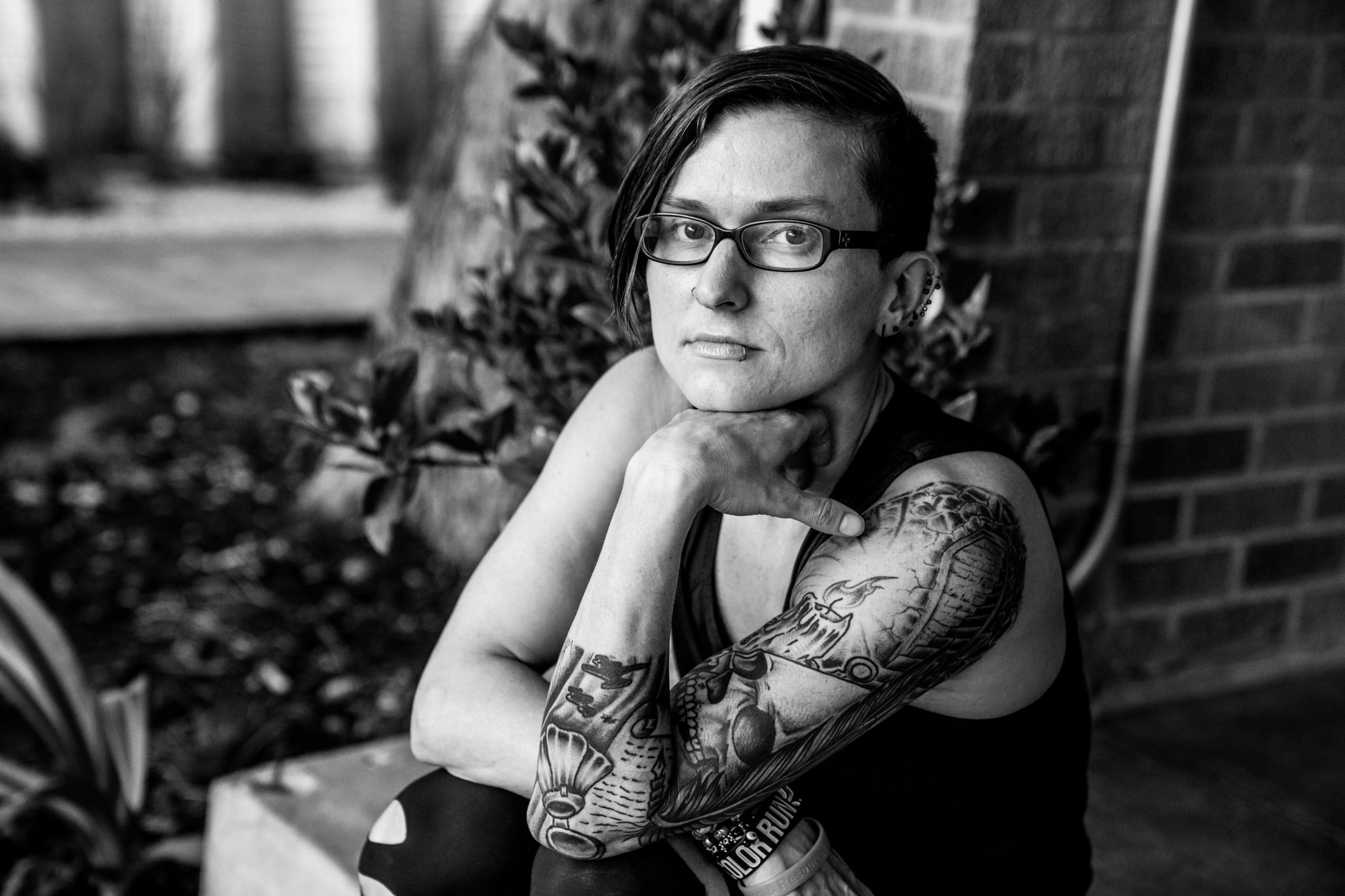
Lining Up a Conviction
A suggestive photo lineup put Juan Balderas on death row. Experts say he may have been wrongfully convicted, but will he get a new trial in time?
At first glance, the photo lineup that helped send Juan Balderas to death row doesn’t look too unusual. It shows six young Latino men staring blankly ahead. Balderas, in the bottom middle position, looks calm, almost as if he’s daydreaming.
But according to judges and experts, this lineup is deeply prejudicial. Two small details — the black hoodie Balderas is wearing and the mark on his left cheek — may have singled him out to the witness who viewed this lineup. Balderas was sentenced to death for a 2005 Houston murder based on the testimony of a single eyewitness, and he’s maintained his innocence ever since.
The witness identification procedure in Balderas’ case gained the attention of the state’s highest criminal court, with a majority of judges ruling in November that it was suggestive, and one judge arguing it was so prejudicial that Balderas deserved a new trial. Combined with allegations that prosecutors hid evidence from the defense during the trial, and that another witness has recanted his account of the shooting, the identification raises the troubling question of whether Balderas was wrongfully convicted.
Meanwhile, a panel of experts formed to cut down on wrongful convictions is urging state legislators to beef up rules for witness identifications. Balderas’ case is one example of how small errors in police treatment of eyewitnesses can lead to serious problems with a conviction.
On December 6, 2005, 16-year-old Eduardo Hernandez was hanging out with friends at an apartment in Alief, a suburb in sprawling southwest Houston. A man in a black hoodie barged in, circled the room, and shot Hernandez nine times in the back and head.
Hernandez was part of a local street gang called La Tercera Crips. He had angered his fellow members by snitching and throwing hand signs for a rival gang, several would later testify.
The only witness who saw the shooter’s face was Wendy Bardales, the sister of Hernandez’s girlfriend. She described the shooter as someone she had never seen before, a young Latino man about 5 feet 6 inches tall, skinny and clean-shaven. He had short black hair in a fade haircut and was wearing a black hoodie. And he had a dark mark on his cheek, she said. The night after the shooting, officers showed her a photo lineup, but she told them the shooter wasn’t in it.

Over the next few days, Houston police received anonymous tips suggesting that Balderas, another member of the gang, was involved. The week after the murder, an officer went back to Wendy with a new lineup of six photos, which the Observer obtained through a Texas Public Information Act request. Wendy recognized Balderas — the two had lived in the same apartment complex and had known each other for about a year. She told the officer that Balderas “could be the shooter,” and that he “looked like the shooter,” even though on the night of the murder she had told police that the shooter was someone she had never seen before.
The officer returned to her house the next day, trying to pin her down on whether Balderas was the shooter, but she still didn’t say she was sure. Finally, the officer told her to place her hands over the top of the face of each subject, in order to simulate the shooter’s hoodie. When she did, the officer later testified, her eyes “grew wide” and “began to water.” Wendy said she was positive that Balderas was the shooter.
“A witness’s actual memory can be forever changed if suggestive procedures are used.”
Experts who study witness identification procedures say it’s a textbook example of an identification gone wrong. The first problem is the lineup itself. It includes only one person — Balderas — who matches the description Wendy gave police. None of the other five men are wearing a black hoodie or have any marks on their faces. They also don’t match her description in other ways: Some are heavier, others not clean-shaven, others not wearing a fade haircut.
“Given the witness’s description, this photo array is extremely suggestive and creates enormous potential for a wrongful conviction,” said Sandra Guerra Thompson, a University of Houston law professor who studies witness identification. “The suspect should not stand out, and given that he is the only person with those distinctive features, this is highly suggestive.” Large police departments typically have huge databases of booking photos, so it shouldn’t be a problem to find “filler” photos that better match a witness’s description.
The process is also an issue. Research over the past few years has made clear that even small, unintentionally leading statements by officers can make witnesses feel pressured to choose someone. Coaching, such as when the officer urged Wendy to cover parts of the faces, can do the same. Among other research, a 2013 study published in Applied Cognitive Psychology found that repeatedly showing a witness the same photo can lead to their memory being essentially overwritten, with the photo replacing the original recollection of the face. “Memory is not like a video that remains constant,” Thompson said. “It is very malleable and very prone to suggestion; a witness’s actual memory can be forever changed if suggestive procedures are used.”
Once Wendy identified Balderas, he became the only suspect in the murder case. Three days later, on December 16, 2005, he was arrested carrying a box of guns that included the murder weapon. (Several gang members later testified that the box contained guns they shared.) More than eight years passed before he went to trial in early 2014, a delay caused by the judge’s overcrowded docket and repeated turnover among prosecutors and defense lawyers. At trial, Wendy told the jury that she was sure Balderas was the shooter. Balderas’ court-appointed attorney called only one witness — another member of the gang, who said that a different gang member had committed the murder. Prosecutors presented no physical evidence connecting Balderas to the crime scene, such as fingerprints or DNA. After deliberating for two days, the jury convicted Balderas and sentenced him to death.
In November 2016, the Texas Court of Criminal Appeals, the highest criminal court in the state, dismissed Balderas’ first appeal. But a majority of justices on the nine-person court said they were concerned with the use of the photo lineup.
“Until this Court disallows tainted identifications based on suggestive photo spreads, as occurred in this case, Texas will continue to be a leader in the wrongful convictions of innocent people,” Judge Elsa Alcala wrote in a dissent. She said Balderas deserved a new trial. In a concurring opinion, four other judges concluded that the witness identification procedure was “suggestive, and perhaps impermissibly so,” but said they would allow Balderas’ conviction to stand because of the “totality of the circumstances.”
The concerns about witness identification make Balderas’ case hardly an outlier: Eyewitness misidentification is the leading cause of convictions that are later exonerated, according to a study by the Timothy Cole Advisory Panel on Wrongful Convictions, a state commission convened by the Legislature. The panel found that more than one-third of the 56 non-drug-related wrongful convictions in Texas since 2010 have come in cases with witness misidentifications. Timothy Cole, the wrongfully convicted defendant for whom the panel is named, was misidentified using a six-person photo lineup just like the one used in the Balderas case.

There’s a pretty clear way to avoid this. Recent research has concluded that all witness identifications should be conducted by a “blind” officer who does not know which person in a lineup is the suspect, that all identifications should be recorded, and that a witness should be informed that the suspect may not be in the lineup and that they aren’t required to choose anyone. Some research also finds that lineups are more dependable when witnesses are shown one photo at a time, which prevents them from scanning multiple photos at once and choosing the person who seems the most similar to their memory, though that conclusion is disputed.
The Texas Legislature passed a law in 2011 that led to the adoption of a state model eyewitness policy that includes most of those reforms.
But police departments don’t have to follow the model policy. The 2011 law only requires departments to have some written policy, whether it meets scientific standards or not. “There’s no real teeth in it,” said David Moore, the president-elect of the Texas Criminal Defense Lawyers Association. The law also isn’t retroactive, so it doesn’t do anything to help defendants like Balderas.
John Cannon, a spokesperson for the Houston Police Department, said the department’s witness identification policy has changed since 2005 and now requires “blind” officers. He said he could not discuss Balderas’ case because his conviction is still being appealed.
In December, the Cole panel released a new report recommending that all Texas police departments be required to follow the model policy. Rodney Ellis, who wrote the 2011 law as a state senator and is now a Harris County commissioner, told the Observer he supported that idea. “There is absolutely room for improvement,” he said in an email, adding that the law was passed as a “compromise.”
But even the new reforms proposed by the panel don’t go far enough, argued Jeff Blackburn, founder of the Texas Innocence Project. His suggestion for the Legislature: Pass a simple law that prevents prosecutors from using any witness identification that modern research tells us is suggestive or biased.
The Balderas case “is a startling example of why people who believe we’re making gradual progress in criminal justice reform are wrong,” Blackburn said. “We need a direct, honest response to this problem, or it’s never going to get solved.”
Aside from the photo lineup, the judges who ruled against Balderas in his appeal found that there was more than enough evidence to convict him. They noted that he was arrested while in possession of the murder weapon and with a magazine clip in his pocket that fit that exact gun. A fellow gang member named Israel Diaz also told the jury that Balderas had confessed to him. Wendy’s identification, the gun and Diaz’s testimony added up to sufficient evidence for a death sentence, the judges found.
But new questions have also been raised about Diaz’s testimony. In court, Diaz dramatically recounted meeting Balderas just hours after the murder took place, describing an almost biblical scene. “He just hugged everyone like sort of when you haven’t seen nobody in a long time, like joyful, and he gave each individual a hug, and when he got towards me, he gave me a hug and kiss on the cheek,” Diaz told the jury. “He said he got him, he finally got him.”
Diaz has since recanted that testimony, according to an affidavit prepared by Balderas’ defense investigator. The investigator said Diaz told him in a 2015 interview that prosecutors pressured Diaz to implicate Balderas. When Diaz resisted, “the prosecutor stopped me there and told me that I needed to ‘change that,’” Diaz is quoted as saying in the investigator’s report. “I was told that I needed to say in court that Juan told me he killed Eduardo.
“The truth is that Juan never told me that.”
On the first day of Balderas’ trial, Diaz finalized a deal with prosecutors. In exchange for testifying, he had charges against him in a separate case reduced from capital murder to aggravated robbery. Diaz was sentenced to 20 years in prison and has now been released on parole, according to state records.
Investigators for Balderas also found 23 pages of handwritten notes from previous interviews with Diaz in prosecutors’ files. They say these notes, taken by prosecutors during interviews in 2007 and 2008, were never released to Balderas’ trial lawyers, which is required by law. According to the notes, Diaz originally told prosecutors that Balderas said “we took care of that,” not that Balderas personally confessed to killing Hernandez.
In court filings, the state has defended Balderas’ conviction and the witness identification procedure. “The witness got a good view of Balderas during the murder, she picked him out of the lineup right away, and she has never wavered in her identification,” Clinton Morgan, an assistant district attorney for Harris County, said in a statement.
Balderas, who has served almost two years on death row at the Polunsky Unit in West Livingston, is now waiting on several appeals. In a letter to the Observer, he said he was hopeful about the results. “The photo lineup was extremely unfair and even more prejudicial was the process in which the tainted identification was obtained,” he wrote. “Though at the moment I feel optimistic in reaching the light of justice, throughout the night I still feel frightened and distressed, aware of the looming death penalty after being wrongfully convicted.”


